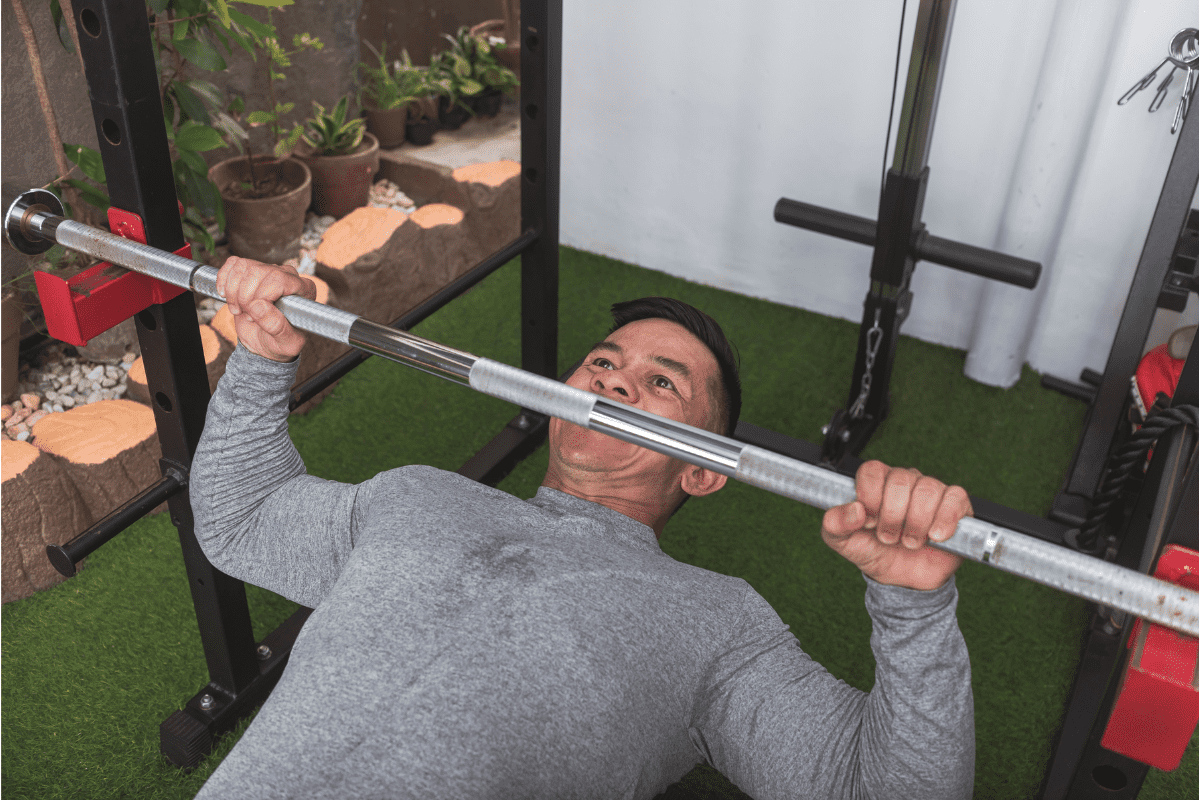13 Inverted Row Alternatives & Variations For a Strong Back
Inverted Rows are a great horizontal rowing back exercise to build size and strength. They’re an extremely versatile bodyweight exercise that requires minimal equipment and has tons of variations.
However, you may find yourself needing an alternative for Inverted Rows.
Maybe you don’t have a setup that allows for Inverted Rows or maybe you’re just looking to add some variety to your training program.
Whatever the reason, in this guide I’m going to share with you 10 of my favorite Inverted Row alternative exercises. I’ve included exercises that use different equipment, different variations and a couple of out-of-the-box options that can definitely change up your workout routine.
This article contains affiliate links. If you buy something using these links I may earn a commission.
Variations for Inverted Rows
Before we get into completely different exercises, I want to briefly mention some Inverted Row variations that can add both challenge and variety to your workout.
Inverted Rows with Feet Elevated
Elevating your feet onto a bench or box can substantially increase the difficulty of the exercise. The more you change the angle of the body the more you can alter the amount of weight your arms have to pull.
If you want even more of a challenge, elevate your feet on a stability ball. This adds the dynamic of balance into the movement making your core have to work much harder to stabilize the body while rowing.
Weighted Inverted Rows
Adding a weight, typically a weight plate or a chain across your chest will add resistance and increase the challenge of Inverted Rows. You’ll also have to stay more in control of your movement and tempo so that the plate stays balanced on your chest and doesn’t fall off.
Tempo Inverted Rows
You can alter the difficulty of any exercise by slowing the tempo and Inverted Rows are a great example of this. Try your rows with a 1-1-3 tempo. That means 1 second pulling up, 1 second pause at the top and a three second eccentric coming back down to arms straight.
You might be surprised how much harder this kind of tempo can make this bodyweight exercise.
Inverted Row Alternatives
TRX Rows

TRX Rows, or Ring Rows if you have a set of gym rings, are very similar to Inverted Rows. In fact, they’re so similar it’s hard to say whether they’re actually an alternative or another variation.
They’re pretty much the exact same movement pattern and they’re going to work the same muscle groups as Inverted Row.
TRX Rows are also a bodyweight exercise where you can increase or decrease the difficulty of the exercise by changing the angle at which you work.
If you take a TRX strap with you on road trips, this should be your go-to alternative for Inverted Rows. (If you don’t already have a TRX Strap, you can pick one up from Amazon here.)
Pull-Ups

Pull-ups and Inverted Rows are very similar exercises. They’re both extremely effective rowing exercises that use nothing more than your bodyweight.
The difference between them is while Inverted Rows are horizontal rows, Pull-ups are vertical rows.
Step-by-Step Instruction
- Approach the pull-up bar and grab the bar with a pronated grip (palms facing away).
- Use a bench to get to the bar if it is too high.
- Later in the article, I will talk about variations, alternatives, and modifications where the supinated (palms facing in) grip will be discussed.
- Squeeze the bar and engage the core muscles and do not cross your legs.
- Engage the upper back and pull up until your chin is over the bar.
- Pause for 1 second with your chin over the bar.
- Slowly lower yourself back to the starting position.
Coaching Points
Take your time and master the Pull-up. The benefits of doing sound pull-ups will pay dividends for your shoulder health and the potential to maximize your upper body strength.
I would highly recommend this movement to any lifter or athlete. It provides all the benefits of an upper-body pulling movement with little to no risk.
Barbell Bent Over Row

Step-by-Step Instruction
- Approach the barbell and take a shoulder-width stance. Your shins should be almost touching the barbell.
- Hinge at the waist and bend the knee until you can grab the barbell. Use a pronated grip (Knuckles facing the floor). I will talk later about the supinated grip (palms up) in this movement.
- Always keep a flat back, and a neutral spine, and keep your eyes focused slightly down about 1 foot in front of you.
- Take a deep breath, brace the abdomen, and pull the bar in until it makes contact right about the belly button.
- Pause for about 1 second. Squeeze the shoulder blades and lock in the rep.
- Slowly return the barbell back to the starting position (weights about 1-2 inches off the ground).
Coaching Points
The initial setup and stance for Barbell Bent Over Rows should be specific to the lifter’s deadlifting and Olympic lifting goals. Having identical setups and grips will be great for the lifts to carry over to the compound movements.
I would highly recommend this movement to any lifter or athlete. It develops strength in the posterior chain and can be overloaded over time easily.
I typically recommend the pronated grip here for athletes. Especially athletes that are cleaning and snatching as the pronated grip will carry over to cleans and pulls.
However, there is some benefit to the supinated grip for general lifters and bodybuilders. The supinated grip will engage more of the biceps and can be a great time under tension movement for hypertrophy.
DB One Arm Row

Step-by-Step Instructions
- Grab a dumbbell and a bench*.
- Place the dumbbell next to the bench and set yourself up.
- If rowing with the right arm, place the left knee and left hand on the bench. Keep the right foot flat on the ground.
- Make sure the back is flat (neutral) to slightly arched.
- Brace the core and pick the dumbbell up.
- Row the dumbbell up, keeping the elbow close to the body as the dumbbell raises.
- Squeeze the back at the top of the rep and then lower the dumbbell down until the arm is fully extended.
- Repeat for the designated number of reps and then switch sides.
*One Arm Rows do not have to be done with one knee on a bench. You can keep both feet flat on the ground and lean forward and brace yourself with your off-hand on something sturdy. You can even lean your off forearm on your leg for support if necessary.
Coaching Points
The most common mistake I see athletes make when doing One Arm Rows is not maintaining a flat back. The back should stay engaged and slightly arched – similar to the starting position of a Power Clean. Do not let the back round as this can cause unnecessary stress on the spine.
Also, do not twist and turn while rowing. You’re not starting a lawn mower. If you need to use your whole body to twist and rock the weight up then the dumbbell is too heavy. Lower the weight and maintain proper form.
Finally, make sure to give yourself enough room to ‘spread out’ and get into a good position.
Often times I see athletes place their off-hand too close to their knee on the bench and/or place their grounded foot too close to the bench. This leads to them being too cramped, making it difficult to achieve proper positioning.
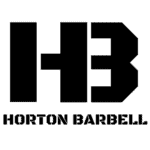
Tired of coming up with your own workouts? But don’t want to pay an arm and a leg?
I post workouts 5 days a week right here. (Did I mention they’re free?)
Renegade Rows
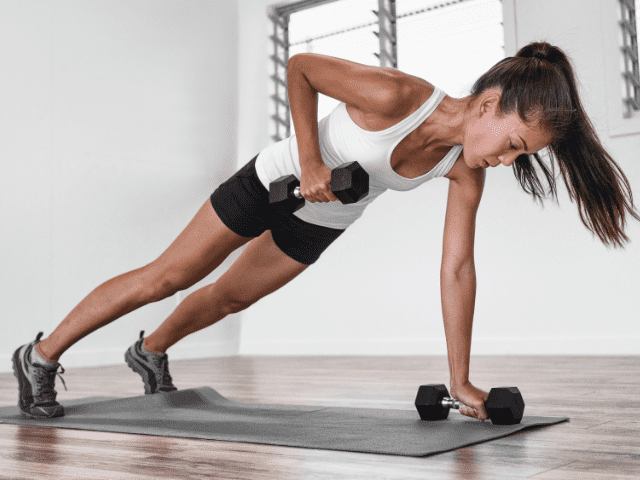
Renegade Rows, or Prone DB Row, is another dumbbell rowing exercise, but one that is much different than One Arm Rows.
Renegade Rows involves grabbing a dumbbell in each hand, assuming a push-up position with feet shoulder-width apart and rowing one dumbbell at a time. You’ll use less weight than with other types of rows, but there are plenty of benefits that come with this exercise.
For starters, the core is going to be hard at work to stabilize the trunk while you row. Next, shoulder stability is also tested because you’re holding yourself up with one arm at a time. If you’re looking for something a little different, Renegade Rows are a great option.
Hex Bar Rows
If you have a Hex Bar (or Trap Bar as they are also called) and you’re not already doing Hex Bar Rows then you are missing out. Simply stand inside your hex bar, grab the handles and row exactly the same as you would for Barbell Bent Rows.
The same thing that makes a hex bar great for Trap Bar Deadlifts also makes them great for rows. Because the weight on the bar sits back closer to your midline it will take a little of the stress off the low back compared to a traditional barbell row.
Plus, just a simple change of equipment can add some much-needed variety to a workout program.
Pro Tip: Hex Bars can vary quite a bit in weight. Take that into consideration when planning how much to load onto the bar for rows.
Hammer Strength Iso Rows
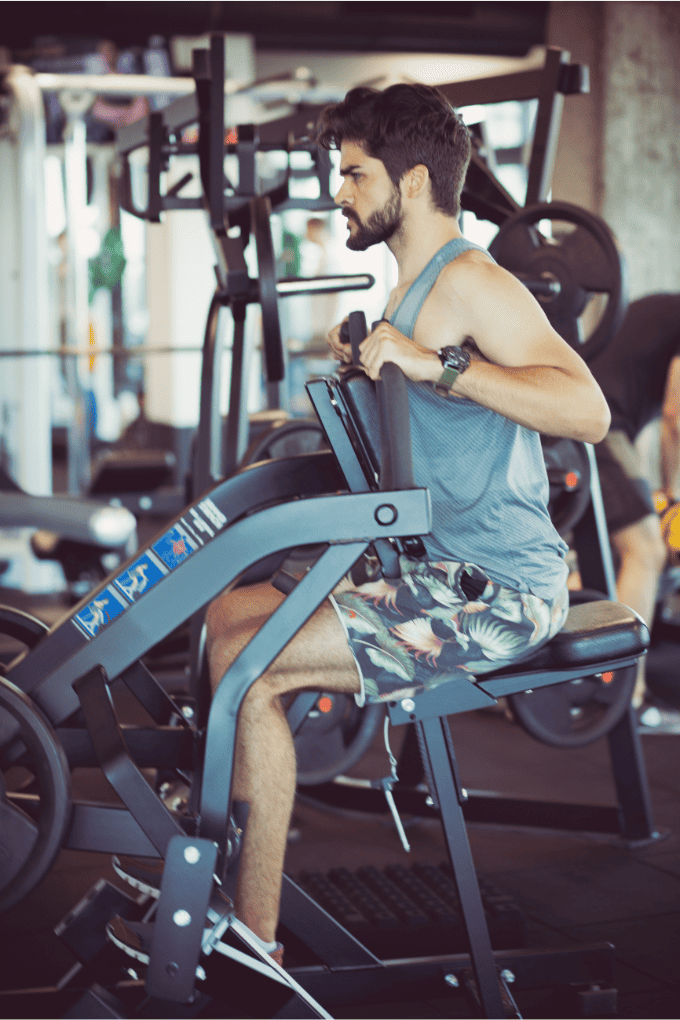
Ah, the Seated Hammer Row machine. I have zero machines in my garage gym, but the one machine I would buy if I ever find one at a decent price is a Hammer Iso Row Machine. It is hands down my favorite.
How To
- Start by either standing or seated* with your chest against the support pad.
- Reach forward, grab the handles and then brace your core and set your posture.
- Row the handles toward your chest, quickly pause at full contraction and then slowly lower back to arm’s length.
- Repeat until all reps are completed.
Coaching Points
If doing Hammer Rows seated, adjust the seat to the proper height so your chest is against the pad and you can row comfortably. For taller lifters, you can also do Hammer Seated Rows standing as well. Lower the seat out of the way and find a comfortable position for your feet to stand.
The rowing motion shouldn’t change whether standing or seated.
By far the biggest mistake I see with Hammer Rows is athletes I coach think that because there is a pad to support their chest, they don’t need to have good posture. This is wrong. You should still have the same posture – back and core engaged – as you would if you didn’t have a pad supporting you.
Chest Supported Dumbbell Rows
Chest Supported Rows are very similar to Inverted Rows in the fact that they’re a rowing exercise that puts minimal stress on the low back (compared to exercises like Barbell Bent Over Rows).
How To
- Set up an adjustable bench at a 45-degree angle.
- Lay on your stomach with your head hanging just above the edge of the bench.
- Grab a dumbbell in each hand and set up with a good posture – core and lats engaged and shoulders neutral.
- Row the dumbbells toward the top of the stomach and squeeze the back at the top of the rep.
- Finally, lower the dumbbells back to the starting position and repeat until all reps are completed.
Coaching Points
Make sure to maintain good posture while doing Chest-Supported Rows. Oftentimes I see athletes who allow their shoulders to slouch forward and drape over the edges of the bench.
Band Rows
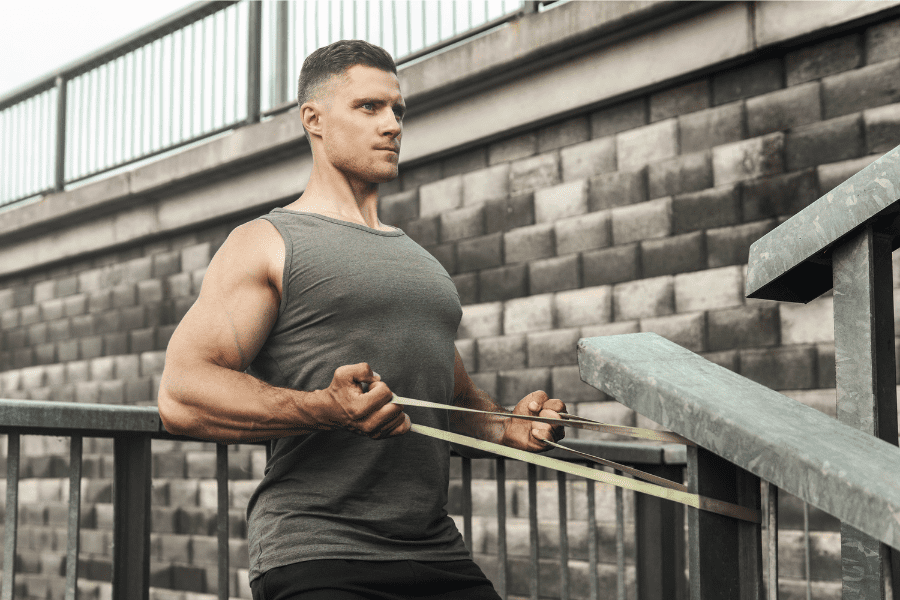
Band Rows aren’t going to replace Inverted Rows for developing strength, but they can work great in a pinch if you’re traveling. Even if you don’t have something sturdy you can attach the resistance band to, you can always wrap them around your feet if need be.
The other place Band Rows can work well is as at the end of a workout to get a good burnout set in to end the day.
Lat Pulldowns
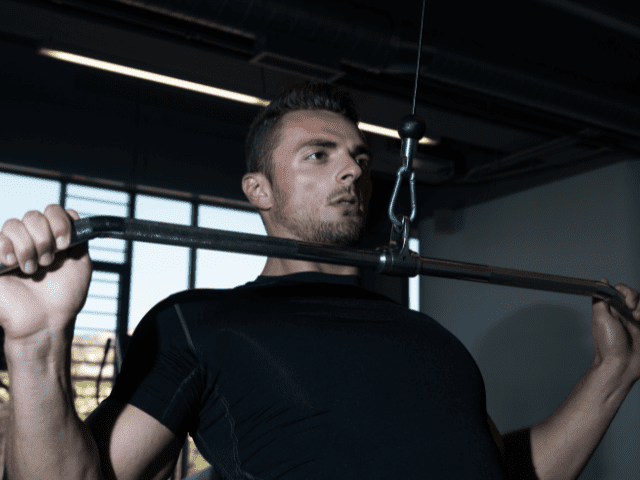
Step-by-Step Instructions
- Depending on the machine or attachment that you’re using the setup may be a bit different.
- Regardless of the setup, try to position your torso predominantly upright with a very slight lean back.
- Grab the bar* just outside shoulder width grip with an overhand grip.
- Now, pull the bar down to your chest, squeezing the lats hard at the bottom.
- After a quick pause at the bottom of the rep, slowly bring the bar back up to the starting position.
- Repeat for the designated number of reps.
Coaching Points
*This is assuming you’re using a standard long Lat Pulldown Bar. If you’re using a different attachment, this is going to vary.
Stay in control of the weight. By far the most common mistake I see lifters make when doing Lat Pulldowns is using way too much weight and rocking and swinging all over the place to try to get the weight to move.
Don’t get me wrong, there is nothing wrong with pushing yourself with heavier weight, but make sure you’re able to maintain proper technique.

Get Shredded… For Free
Get a free workout Monday through Friday, posted right here on Horton Barbell. These workouts are designed to help you get strong, in shape and look great at the beach!
Final Thoughts
I love Inverted Rows as a back development exercise, but sometimes these rows just aren’t an option.
Whether you’re lacking proper equipment or are just looking for a different movement to add some variety to your program, I hope at least one of these alternatives I’ve listed here is a good fit for you.
Featured Image Photo Credit: MDV Edwards / shutterstock.com

